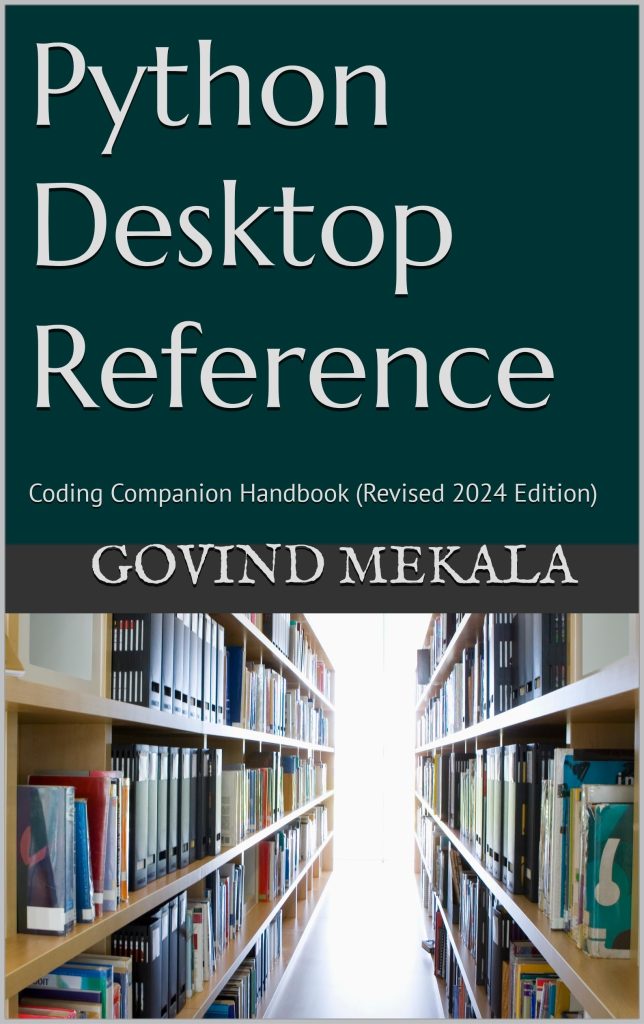
The realm of probabilistic modeling, as elucidated through the lens of TensorFlow, emerges as a profound confluence of mathematics and computation. At its core, TensorFlow Distributions provides a robust framework to define and manipulate probability distributions. This capability is notably vital for statisticians and machine learning practitioners, who seek to encapsulate uncertainty in their models.
TensorFlow Distributions allows for the representation of a wide array of probability distributions, including both continuous and discrete types. This library offers a plethora of features, including sampling, moment calculations, and inference, all of which are integral to probabilistic modeling.
To grasp the significance of TensorFlow Distributions, one must first recognize the fundamental representation of random variables. A random variable, in a mathematical sense, is a mapping from outcomes of a random process to numerical values, and TensorFlow Distributions elegantly encapsulates this notion. Each distribution can be instantiated as an object, thus enabling intuitive and efficient manipulation.
Ponder the implementation of a simple Gaussian distribution, which is pivotal in many applications. That’s accomplished as follows:
import tensorflow as tf # Create a Gaussian distribution mean = 0.0 stddev = 1.0 gaussian_distribution = tfp.distributions.Normal(loc=mean, scale=stddev) # Sample from the distribution samples = gaussian_distribution.sample(5) print(samples.numpy())
In this example, we leverage TensorFlow Probability (TFP), an extension of TensorFlow that facilitates probabilistic modeling. The Normal class represents the Gaussian distribution, parameterized by its mean and standard deviation. The sample method generates instances of the distribution, offering a glimpse into the variability intrinsic to the modeled phenomenon.
Furthermore, TensorFlow Distributions supports a variety of operations, such as computing logs of probability densities, accumulating probabilities, and conducting statistical inference. The log probability, for example, is an important concept in many learning algorithms, particularly those that utilize maximum likelihood estimation.
# Compute log probability of sampled values log_probs = gaussian_distribution.log_prob(samples) print(log_probs.numpy())
This snippet illustrates how one can compute the log probability of the sampled values, thus enabling further statistical analysis. The blending of these operations with TensorFlow’s automatic differentiation capabilities further empowers practitioners to optimize and adapt their models effectively.
The understanding of TensorFlow Distributions is pivotal for anyone delving into probabilistic modeling. Through its elegant abstraction of random variables and distributions, one can efficiently incorporate uncertainty into machine learning pipelines, paving the way for more robust and adaptable models.
Key Concepts in Probabilistic Modeling
The landscape of probabilistic modeling is rich with concepts that not only provide a framework for quantifying uncertainty but also afford the ability to draw inferences from data. A solid understanding of these key concepts is essential for using TensorFlow Distributions effectively. Central to this discourse is the notion of random variables, probability spaces, and the relationships between them.
At the heart of probabilistic modeling lies the random variable, which serves as a fundamental building block. A random variable is characterized by its probability distribution, which encodes the likelihood of different outcomes. TensorFlow Distributions encapsulates this relationship, allowing practitioners to define random variables through various predefined distributions. Each distribution embodies different assumptions and properties, thereby allowing for a flexible approach to modeling uncertainty.
Another essential concept is the probability density function (PDF) or probability mass function (PMF), depending on whether we are dealing with continuous or discrete random variables, respectively. The PDF provides a measure of the likelihood of a random variable falling within a particular range of values, while the PMF serves a similar purpose for discrete random variables. TensorFlow Distributions allows users to compute these functions with great ease, facilitating a better grasp of the underlying probabilities.
Moreover, the cumulative distribution function (CDF) plays an important role, as it offers insights into the probability that a random variable is less than or equal to a given value. The CDF is particularly useful in statistical inference, as it can be used to derive quantiles and other significant statistics. For example, calculating the CDF of a Gaussian distribution defined in TensorFlow can be illustrated as follows:
import tensorflow as tf import tensorflow_probability as tfp # Define parameters for Gaussian distribution mean = 0.0 stddev = 1.0 gaussian_distribution = tfp.distributions.Normal(loc=mean, scale=stddev) # Compute the cumulative distribution function for a range of values values = tf.constant([-2.0, -1.0, 0.0, 1.0, 2.0]) cdf_values = gaussian_distribution.cdf(values) print(cdf_values.numpy())
This snippet effectively computes the CDF at specific points, illustrating the distribution’s behavior across its range. Such computations are foundational in various statistical techniques, including hypothesis testing and confidence interval estimation.
Another critical concept in probabilistic modeling is the notion of independence. In the probabilistic context, two random variables are independent if the occurrence of one does not affect the other. TensorFlow Distributions facilitates the construction of joint distributions that can represent complex dependencies between multiple random variables. For instance, one can create a joint distribution from independent Gaussian distributions using the following syntax:
# Create independent Gaussian random variables
gaussian_1 = tfp.distributions.Normal(loc=0.0, scale=1.0)
gaussian_2 = tfp.distributions.Normal(loc=3.0, scale=2.0)
# Construct a joint distribution
joint_distribution = tfp.distributions.JointDistributionSequential([
gaussian_1,
gaussian_2
])
# Sample from the joint distribution
joint_samples = joint_distribution.sample(5)
print(joint_samples.numpy())
This example illustrates the construction of a joint distribution composed of two independent Gaussian random variables. The JointDistributionSequential class allows for a sequential combination of distributions, enabling a modular approach to building complex probabilistic models.
Lastly, understanding the concepts of Bayesian inference and posterior distributions further enriches the probabilistic modeling paradigm. The interplay between prior distributions, likelihoods, and posterior distributions forms the bedrock of Bayesian analysis. TensorFlow Distributions provides mechanisms to define these distributions, allowing for the effective updating of beliefs based on observed data.
A firm grasp of these key concepts in probabilistic modeling enhances one’s ability to utilize TensorFlow Distributions. This deepens the practitioner’s capacity to create sophisticated models that account for uncertainty, thereby fostering advancements in various domains such as machine learning, data science, and statistical analysis.
Implementing Probability Distributions in TensorFlow
The implementation of probability distributions in TensorFlow encompasses a diverse array of functions and methodologies, enabling developers to seamlessly integrate probabilistic modeling into their applications. With TensorFlow Probability (TFP), users can specify distributions in a modular fashion, allowing for clarity and extensibility in their probabilistic frameworks.
To delve into the practical aspects, consider the implementation of a Bernoulli distribution, which is pertinent for modeling binary outcomes. The Bernoulli distribution is defined by a single parameter, the probability of success, denoted as p. We can instantiate this distribution in TensorFlow as follows:
import tensorflow as tf import tensorflow_probability as tfp # Define the success probability p = 0.7 bernoulli_distribution = tfp.distributions.Bernoulli(probs=p) # Sample from the distribution samples = bernoulli_distribution.sample(10) print(samples.numpy())
In the above code, we specify a Bernoulli distribution by defining the success probability, p. The sample method generates samples indicative of the binary nature of this distribution, thus conveying the likelihood of achieving success in independent trials.
Expanding the scope of implementation, one might also explore the Poisson distribution, which models counts of events that occur independently over a fixed interval. The parameter for the Poisson distribution is the rate parameter λ, which signifies the average number of occurrences. The implementation follows a similar pathway:
# Define rate parameter for Poisson distribution lambda_param = 3.0 poisson_distribution = tfp.distributions.Poisson(rate=lambda_param) # Sample from the distribution poisson_samples = poisson_distribution.sample(10) print(poisson_samples.numpy())
Here, the defining feature of the Poisson distribution is encapsulated by the rate parameter, which governs the distribution’s shape. Sampling from this distribution provides insights into the variability of counts over specified intervals, a critical aspect in many real-world applications, such as queuing theory or event modeling.
Furthermore, TensorFlow Probability supports the construction of empirical distributions, which are derived from observed data. This approach is particularly useful when the underlying distribution is unknown. With TFP, one can employ the Empirical class to create an empirical distribution from a dataset:
# Sample data for creating an empirical distribution data = tf.constant([1.0, 2.0, 3.0, 4.0, 5.0]) empirical_distribution = tfp.distributions.Empirical(predictive_samples=data) # Sample from the empirical distribution empirical_samples = empirical_distribution.sample(10) print(empirical_samples.numpy())
This example illustrates the simplicity of constructing an empirical distribution directly from data. By using the observed samples, one can encapsulate the statistical properties inherent in the real-world phenomena being modeled.
The ability to manipulate weights and measures across distributions is equally vital. For instance, the idea of mixture distributions enables the combination of multiple distributions to model more complex phenomena effectively. One can define a mixture of Gaussian distributions as follows:
# Define mixture components
weights = [0.5, 0.5]
components = [
tfp.distributions.Normal(loc=-2.0, scale=1.0),
tfp.distributions.Normal(loc=3.0, scale=1.0)
]
# Create a mixture distribution
mixture_distribution = tfp.distributions.MixtureSameFamily(
mixture_distribution=tfp.distributions.Categorical(probs=weights),
components=components)
# Sample from the mixture distribution
mixture_samples = mixture_distribution.sample(10)
print(mixture_samples.numpy())
In this code, the MixtureSameFamily class allows for the creation of a mixture distribution comprising Gaussian components. That is particularly powerful for modeling multimodal data where more than one underlying process is at work.
TensorFlow’s flexibility allows for such implementations with ease, opening doors to sophisticated statistical modeling techniques. Each distribution class encapsulated within TensorFlow Distributions is accompanied by a suite of methods, including sampling, computing probability density functions, and cumulative distribution functions, extending the capability to conduct rigorous statistical analyses.
Integrating these implementations into machine learning pipelines further enhances the modeling capabilities. By incorporating probabilistic elements, one can address uncertainty, enabling more robust decision-making in the face of varying data conditions. As one engages with TensorFlow Distributions, the vast landscape of probabilistic modeling expands, empowering practitioners to explore a myriad of possibilities tethered by the principles of randomness and uncertainty.
Applications of TensorFlow Distributions
In the vast expanse of probabilistic modeling, the applications of TensorFlow Distributions stand as a testament to the power of statistical inference. By using a plethora of distributions, one can address a myriad of real-world problems, encapsulating uncertainty and variability inherent to data. The versatility of TensorFlow Distributions enables practitioners to construct models that reflect complex phenomena, facilitating insights that echo through domains such as finance, healthcare, and artificial intelligence.
One notable application is in Bayesian inference, where the use of prior distributions, likelihood functions, and posterior distributions is paramount. TensorFlow Distributions allows for the elegant implementation of these principles, providing a structured way to update beliefs based on new data. For instance, consider a scenario where we seek to infer the probability of a coin being biased based on observed flips. We can define a beta prior distribution and employ the Bernoulli likelihood to form the posterior distribution as follows:
import tensorflow as tf import tensorflow_probability as tfp # Define prior (Beta distribution) alpha = 2.0 beta = 2.0 prior = tfp.distributions.Beta(concentration1=alpha, concentration0=beta) # Define likelihood (Bernoulli distribution) observed_data = [1, 1, 0, 1] # Coin flips: heads=1, tails=0 likelihood = tfp.distributions.Bernoulli(probs=prior.sample()) # Compute posterior using Bayes' theorem posterior_alpha = alpha + sum(observed_data) posterior_beta = beta + len(observed_data) - sum(observed_data) posterior = tfp.distributions.Beta(concentration1=posterior_alpha, concentration0=posterior_beta) # Sample from posterior posterior_samples = posterior.sample(10) print(posterior_samples.numpy())
This snippet adeptly illustrates the interplay between prior beliefs and observed evidence, culminating in a refined posterior distribution. Such methodologies facilitate robust decision-making under uncertainty, showcasing the import of probabilistic reasoning in various applications.
Furthermore, the realm of reinforcement learning presents another substantial application for TensorFlow Distributions. In environments where agents must learn optimal strategies through trial and error, the ability to model stochastic policies becomes crucial. TensorFlow Distributions enables the easy definition of probabilistic policies which can be utilized in algorithms such as policy gradients. By modeling actions as samples from probability distributions, agents can explore various strategies more effectively. Here’s an example of defining a categorical distribution for action selection:
# Define action probabilities
action_probs = tf.constant([0.2, 0.5, 0.3]) # Probabilities for actions A, B, C
action_distribution = tfp.distributions.Categorical(probs=action_probs)
# Sample an action based on the defined probabilities
selected_action = action_distribution.sample()
print("Selected Action:", selected_action.numpy())
This model of action selection allows agents to balance exploration and exploitation, essential for learning effective policies over time. The integration of such probabilistic models into reinforcement learning frameworks underscores the profound flexibility afforded by TensorFlow Distributions.
Additionally, think the application of TensorFlow Distributions in the domain of generative modeling. Generative models, such as Variational Autoencoders (VAEs), utilize probability distributions to describe the latent variables underlying observed data. TensorFlow provides tools to seamlessly define these latent distributions, enabling the reconstruction of complex data distributions. A basic implementation can be illustrated as follows:
# Define a simple latent space distribution
latent_mean = 0.0
latent_stddev = 1.0
latent_distribution = tfp.distributions.Normal(loc=latent_mean, scale=latent_stddev)
# Sample from the latent space
latent_samples = latent_distribution.sample(10)
print("Latent Samples:", latent_samples.numpy())
In this context, generative modeling becomes a profound means of data synthesis, allowing for the exploration of complex data distributions through latent variable modeling. The ability to define such distributions with TensorFlow Distributions enhances the potential for breakthroughs in data generation and manipulation.
Moreover, TensorFlow Distributions finds its applications in finance, where modeling uncertainties in market behaviors and asset returns is of utmost importance. For instance, one might utilize a Student’s t-distribution to model returns, accounting for heavy tails often observed in financial data. The implementation of such a model facilitates the quantification of risk and the construction of more resilient portfolios:
# Parameters for a Student's t-distribution
degrees_of_freedom = 5
student_t_distribution = tfp.distributions.StudentT(df=degrees_of_freedom, loc=0.0, scale=1.0)
# Sample from the distribution
financial_samples = student_t_distribution.sample(10)
print("Financial Samples:", financial_samples.numpy())
Through this application, practitioners are equipped not merely to describe market phenomena but to quantitatively assess risks and make informed decisions. The synergy between TensorFlow Distributions and financial modeling epitomizes the utility of probabilistic frameworks in navigating uncertainties.
In these multifaceted applications, TensorFlow Distributions emerges as an invaluable tool, providing the infrastructure upon which a high number of probabilistic models can be constructed. Its capacity to define and manipulate a variety of distributions empowers practitioners across diverse domains, establishing a pathway through which complex phenomena can be understood and leveraged. As we traverse the realms of probabilistic modeling, the applications of TensorFlow Distributions continue to unfold, inviting exploration and innovation.
Advanced Techniques for Custom Distribution Creation
In the pursuit of advancing the capabilities of TensorFlow Distributions, one may encounter scenarios necessitating the construction of custom distributions tailored to specific requirements. This endeavor often hinges on the need to encapsulate unique probabilistic behaviors that existing distributions cannot adequately model. TensorFlow Probability provides a flexible architecture for creating these bespoke distributions, enabling practitioners to extend the library’s functionality to fit their modeling needs.
Understanding the foundational components is essential when embarking on this journey. To construct a custom distribution, one typically derives from the tfp.distributions.Distribution class, which serves as the base for all distributions within TensorFlow Probability. The implementation of a custom distribution requires the overriding of several key methods: log_prob, sample, mean, and stddev, among others. Each of these methods plays a pivotal role in defining the behavior and characteristics of the distribution.
Let us consider an example where we wish to create a custom distribution that behaves similarly to a Gaussian but with a twist: it will incorporate a skewness parameter. This distribution can serve to model phenomena where the inherent variability is not adequately captured by traditional symmetric distributions.
import tensorflow as tf
import tensorflow_probability as tfp
class SkewedNormal(tfp.distributions.Distribution):
def __init__(self, loc, scale, skewness, validate_args=False, name='SkewedNormal'):
self._loc = loc
self._scale = scale
self._skewness = skewness
super(SkewedNormal, self).__init__(dtype=tf.float32, reparameterization_type=tfp.distributions.FULLY_REPARAMETERIZED,
validate_args=validate_args, name=name)
def _mean(self):
return self._loc
def _stddev(self):
return self._scale
def _sample(self, n, seed=None):
samples = tf.random.normal(shape=[n], mean=self._loc, stddev=self._scale, seed=seed)
skewed_samples = samples + self._skewness * tf.abs(samples)
return skewed_samples
def _log_prob(self, value):
return -0.5 * ((value - self._loc) / self._scale) ** 2 # Simplified for demonstration
# Example usage:
skewed_normal_dist = SkewedNormal(loc=0.0, scale=1.0, skewness=0.5)
custom_samples = skewed_normal_dist.sample(10)
print("Custom Skewed Samples:", custom_samples.numpy())
In this implementation, the SkewedNormal class encapsulates the properties of a skewed normal distribution. The constructor initializes the distribution’s mean, scale, and skewness parameters. The _mean and _stddev methods return the parameters, while the _sample method generates samples that incorporate the skewness. The _log_prob method computes the log probability, albeit simplified here for illustrative purposes. This method would generally need to represent the intricate behavior of a skewed distribution more accurately.
Beyond the analytical definition of the distribution, TensorFlow facilitates seamless integration with the optimization and inference procedures that are characteristic of probabilistic modeling. One can easily augment learning algorithms by substituting standard distributions with custom ones, thus extending the frameworks in novel ways. For example, Gaussian processes, which are potent tools in machine learning, can leverage custom distributions to encode prior knowledge about function behaviors.
Incorporating such custom definitions into broader probabilistic models, one can harness TensorFlow’s capabilities to cater to specific scenarios, such as modeling complex dependencies in high-dimensional data or capturing the variability in real-world phenomena more accurately. It also opens avenues for research in custom loss functions tailored for specialized applications, thereby enriching the landscape of probabilistic modeling.
The path towards creating custom distributions in TensorFlow is paved with opportunities to innovate and refine the probabilistic models that underpin sophisticated data analyses. This flexibility empowers practitioners and researchers alike to tailor their tools to better reflect the intricacies of the phenomena they seek to understand.






